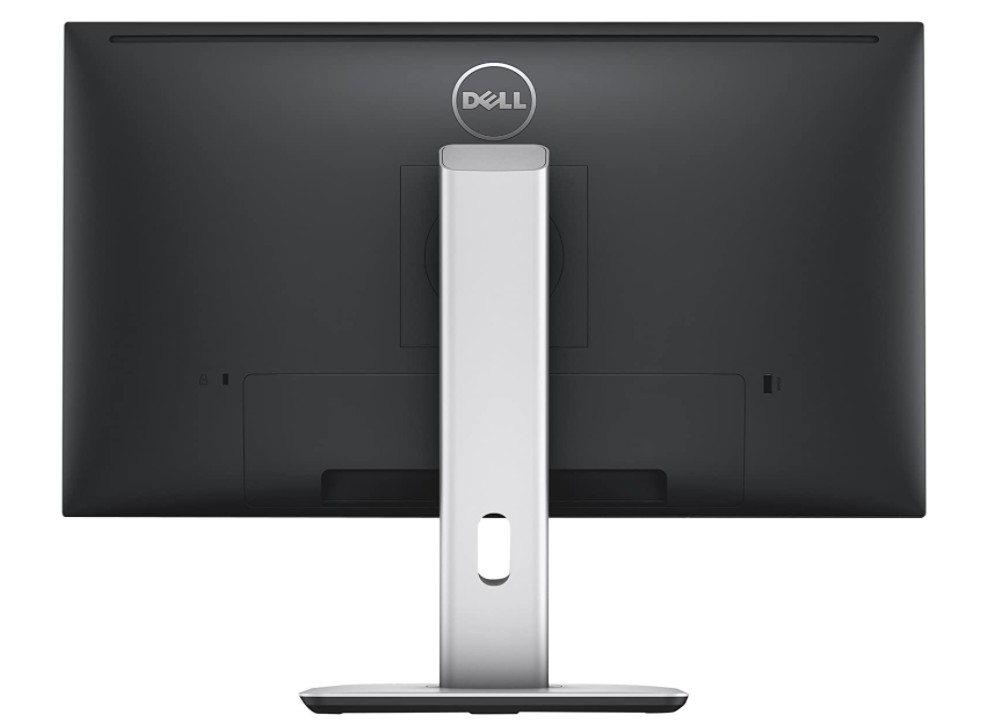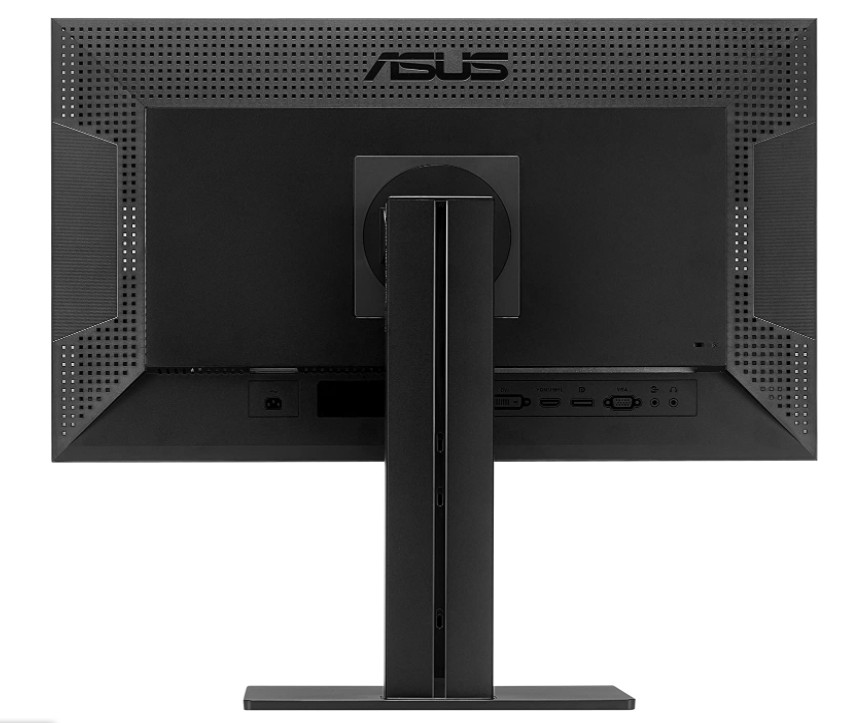Both Asus and Dell are known for offering top-quality monitors. So, in this post, we will compare Asus PB258Q VS Dell U2515H monitors.
When it comes to monitors, you cannot ignore Asus or Dell. They have a great lineup of monitors. In addition, the quality and durability of their monitors are also great.
The Asus PB258Q and the Dell U2515H monitors are 2 of the most popular monitors in their 25-inch monitor lineup. Both these monitors come with some unique features. Also, they have a great outlook and build quality. In addition, the price of these monitors is also not that high.
So, in this post, we will talk about the differences between these two monitors. By the time you have gone through the post, you should be able to choose the better one between these two monitors.
So, let’s cut to the chase…
Comparison analysis – Asus PB258Q VS Dell U2515H
It is not easy to compare monitors from two different brands. Because most of the time, these brands integrate unique features on their monitors.
Still, we will try to make a justified comparison between these two. Below, we will compare the Asus PB258Q and Dell U2515H from various perspectives. So let’s go…
Display Features
First of all, we will compare the display features of these two monitors. The Asus PB258Q comes with a 25 inch display. It has a 2560 x 1440 p screen resolution and an aspect ratio of 16:9.
This monitor is equipped with a LED-backlit AH-IPS panel. That means you are getting a 178-degree wide viewing angle. On top of that, it has 100% sRGB coverage.

On the contrary, the Dell U2515H monitor also comes with the same 25-inch display size. It also sports the same screen resolution of 2560 x 1440p and a 178-degree wide viewing angle.
The IPS panel display comes with LED-backlit technology and anti-glare technology with hard coat 3H. Similarly, it also has a 16:9 aspect ratio. Plus, both these monitors come with a bezel-less design.
In short, we can tell that when it comes to the display features, both these monitors are neck and neck.
Audio Features
The Asus PB258Q comes with built-in speakers. Whereas, the Dell one doesn’t have any built-in monitors. We must admit that the quality of the built-in speakers of the Asus monitor is very bad.
So, it is compulsory to use external speakers with this monitor if you want the best quality sound. That means it doesn’t matter even if the Dell monitor doesn’t have built-in speakers.
Video Features
The ASUS PB258Q comes with the popular Asus Splendid video modes. There are several modes to choose from like Picture Mode, Theater Mode, sRGB Mode, Game Mode, Dark Room Mode, Reading Mode, Night View Mode, Standard Mode, and more.
So, if you are into customizing or fine-tuning the picture quality settings, then you will love these pre-loaded settings. Out of the box, you would get accurate color and the ability to customize it to your liking.
Similarly, the Dell U2515H is also another very color-accurate monitor. Because it is factory tuned at 99% sRGB and it has a deltaE less than 3. For your information, the Dell monitor comes with a typical contrast ratio of 1000:1.
On the other hand, the Dynamic Contrast Ratio is 2 million: 1 (maximum). The peak brightness of this monitor is up to 350 cd/m2. And, the minimum brightness is 50 cd/m2.
The Asus PB258Q also comes with a maximum brightness of 350 cd/m2. And the Asus Smart Contrast Ratio is 100000000:1 on that monitor. The Asus monitor also comes with 3 Modes of Skin-Tone selection. And, 4 Modes on color temperature selection. It also comes with the QuickFit feature for aligning Letter/A4/Alignment Grid/Photo Modes.
In terms of refresh rate, the Dell monitor comes with a 60 Hz display. Whereas the Asus comes with a 75 Hz refresh rate. And, the gray to gray response time of the Asus PB258Q is 5 ms. Whereas, Dell has a gray to gray response time of 6 ms on Fast Mode. But in normal mode, it goes up to 8 ms.
Connectivity Ports
Both of these monitors are integrated with a ton of I/O ports. At the back of the Asus PB258Q, you will get 1 x HDMI/MHL, 1x D-Sub, 1x DisplayPort 1.2, 1x Dual-link DVI-D ports.
At the same time, two 3.5 mm Mini-jacks for the PC audio input and earphone jack are available. Interestingly, there are no USB ports on this monitor.

However, the Dell U2515H monitor comes with 5 USB 3.0 ports (Downstream and 1 USB 3.0 port (Upstream). Now, 4 of those USB ports are the back, and 1 with battery charging feature.
It also has a USB 3.0 Hi-Speed hub. As a result, in terms of USB ports, the Dell U25115H is the winner over the Asus PB258Q.
On the other hand, the Dell monitor comes with 2 x HDMI, 1 x Mini DisplayPort, 1 x DisplayPort (version 1.2), 1 x DisplayPort out (MST), 1 x Audio Line out. Overall, you can see that the Dell monitor is better than the Asus one when comparing the connectivity ports.
Buttons and Hotkeys
Both of these monitors have buttons and hotkeys for operating the OSD menu. On the Asus, you will find the buttons at the front-right-bottom of the display.
For the Asus monitor, it has hotkeys from customizing the brightness, volume, input selection, QuickFit, Splendid Video preset mode, and auto adjustment. For both these monitors, it is very easy to get the hang of the OSD menu.
Mechanical Features
The Asus PB258Q monitor has tilt (+20°~-5°), swivel (+60°~-60°), pivot (0°~+90°), and height adjustment feature (0~120 mm). In addition, it also supports VESA wall mounting (100 mm x 100 mm).
You will also love the ‘Quick Release Stand Design’. For security, this monitor also features a Kensington lock.
On the flip side, the Dell monitor also has some similar features. For instance, the stand of the monitor supports tilt, pivot, swivel, and height-adjustability. In addition, it also offers a built-in cable management system in the stand.
You will also love that this Dell monitor also supports Vesa (100 mm) wall mount. For security reasons, there is a security lock slot and anti-theft stand lock slot to the panel. In that sense, both these monitors are great when it comes to mechanical specifications.
Power Consumption
Once again, both these monitors come with a good power consumption feature. Normally, the Asus PB258Q needs 23.83 watts while turned on. And, if it is in the power-saving mode or turned off, it would consume only 0.5 watts.

Similarly, when in standby or sleep mode, the Dell U2515H monitor will consume only 0.5 watts. Typically, the monitor will consume 35 watts to 87 watts of power. So you can see that both these monitors are very environment friendly and energy-efficient.
Weight and Dimension
Without the stand, the net dimension of the Asus monitor is 570.8 x 340.9 x 59.6 mm (WxHxD) and with the stand, it measures 570.8 x 411.4 x 220 mm (WxHxD). The estimated net weight of the monitor is 7.5 KG.
The Dell monitor measures about 569.0 x 398.0 ~ 512.5 x 205.0 mm with the stand. On the contrary, the monitor measures 569.0 x 338.7 x 46.4 mm without the stand. And, the net weight of the panel only without the stand is 4.4 kg.
Accessories
When it comes to the accessories, both these monitors come with almost all the necessary ones. For instance, the Asus PB258Q monitor comes with these…
- Dual-link DVI cable (Optional)
- VGA cable
- Audio cable
- Power cord
- DisplayPort cable (Optional)
- Quick start guide
- HDMI cable (Optional)
You can see that we have added optional next to some accessories. It is because depending on the location of the buyer, they will get one of these cables. For instance, some buyers might get an HDMI cable but no DVI or DisplayPort cables. But we have seen most of the units come with the HDMI cable.
And in the case of the Dell U2515H monitor, you are getting…
- Cable cover
- Power cable
- DP cable ( Mini-DP to DP)
- USB 3.0 upstream cable
So, in this case, you are not getting the HDMI or DVI cables.
Additional Features
The Asus PB258Q and Dell U2515H monitor have their own unique features. For example, the Asus monitor comes with splendid video modes. So you can customize the video settings on the go. In addition, it has the ‘ASUS EyeCare Flicker-Free Technology’.

You will also like the ‘ASUS EyeCare Low Blue Light Filter’ feature. Both of these features will help save your eyes from the harmful blue light and fatigue while using the monitor for an extensive period.
On the other hand, the Dell monitor comes with 5 USB 3.0 ports. And you can charge BC1.2-compatible devices with those ports.
Price
At the time of writing this post, the original price of these monitors was not available. Because these monitors are not available anywhere for sale at the moment.
However, after some research of our own, we have come to know that both the Dell U2515H and ASUS PB258Q can be found around 300 USD. So, in that case, both of these monitors are affordable. So, depending on the budget, you can go with either of these.
Picture Quality and Performance
When you are buying a monitor, the most important thing to you should be the picture quality and the performance of the unit. Now, when it comes to picture quality, a lot depends on the panel that was used.
Interestingly, we have found out that both the Dell U2515H and the Asus PB258Q use the same display panel. So, you can expect almost identical picture quality on these two monitors.
So, it is up to your personal preference to choose the one that suits you the most. Also as per many users, both of these monitors have great calibration out of the box.
Now, in terms of performance, the Dell monitor has some extra features like multiple USB 3.0 ports and a great stand. On the Asus, there are no USB ports.
Also, the quality of the Asus is not as good as Dell’s one. But that doesn’t mean that Asus’s stand is very bad. Just the rotating capability is smoother on the Dell stand.

Here’s the deal. The base of the Asus monitor stand rotates on an axis. On the other hand, the Dell monitor’s stand rotates while the base of the monitor is stationary.
For your information, the Dell has capacitive touch buttons, while the ASUS comes with physical buttons. Many customers complained that the Dell capacitive buttons have some issues. But the Asus monitor doesn’t have any problems with the buttons.
So, Asus PB258Q VS Dell U2515H? Have you made your decision yet?
Closing Thoughts on Asus PB258Q VS Dell U2515H
If you are still with us, then you should already have enough knowledge to differentiate between these two monitors. We have tried to offer an extensive comparison of these monitors.
So, we have compared them in terms of different parameters. You can see that both the Dell U2515H and Asus PB258Q monitors have high-end features and specifications. And their price is also not out of reach for consumers.
And, when it comes to the final call on Asus PB258Q VS Dell U2515H, you should consider whether you are a Dell or Asus fan. Because these monitors use the same exact panel. Of course, if you need USB ports on your monitor, then Dell U2515H is the way to go. Otherwise, if you want physical buttons, then the ASUS PB258Q is the answer. We have shared this detailed comparison guide with you. Now it is your turn to choose the winner.
As usual, you can let us know your opinions or suggestions in the comments below. And, if you have found this post helpful, don’t forget to share this with others.
More Posts for You: